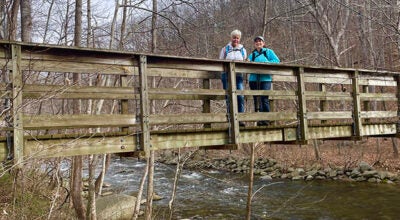Old Dillwyn Primary School looked to for library
Published 10:44 am Thursday, March 17, 2016
The Buckingham County Board of Supervisors unanimously voted Monday to request proposals to study the former Dillwyn Primary School building for the potential housing of a public library.
Part of the motion, made by District One Supervisor R.C. “Bobby” Jones, stipulated that $250,000 in the existing fiscal year’s county budget be included in the 2016-17 budget.
The action came after 11 people spoke in support of the construction of a new library and after Library Liaison Committee member H. Spencer Adams requested the board retain the $250,000 in the upcoming budget.
The request for proposals, or RFP, will determine if it’s feasible to renovate the old school to house a library facility of about 10,000 square feet and will examine engineering and architectural aspects of the building, which was constructed in 1954.
“Emphasis should be paid to the structural integrity of the building, the need, if any, for the abatement of asbestos and a cost estimate without doing an actual design to modify the former school to house a library. …,” Jones said in his motion.
Before Jones offered the motion, Adams listed a number of reasons why the supervisor-appointed Library
Liaison Committee thought that the old school would not be suitable for the new library.
Jones said that if the building is structurally sound, part of it could serve as a community center and house school offices and school athletic offices. “There’s just multiple things (that) can be housed in there if it is suitable structurally.”
In October, supervisors unanimously voted to designate 3.5 acres of county-owned property on Wingo Road adjacent to the Buckingham Recycling Center (just off of U.S. Route 15 near Dillwyn) for the proposed new library. The action also stipulated that the county’s library liaison committee could move forward with the preparation of “necessary construction documents” for a building that the county would own and lease to the library.
“Why not go ahead and get a study on the building to find out what we can do with it?” said District Four Supervisor Morgan Dunnavant. “I don’t think anybody on the board is against the library. I think we want to move forward with it as frugally as possible.”
Adams said that the old school was over 24,000 square feet, which was over two times the size of what’s needed for a new library. He said the structure corridor of the old school would have to be completely modified for the building to work as a library. He also said that the classroom design of the building “does not translate into the open needs of a library.”
He noted that all systems in the old school would need to either be replaced or removed to make it work as a library.
“The building is not ADA compliant. Multiple bathrooms would have to be added to allow for after-hours access to public meeting rooms,” he said.
Adams said there was asbestos and lead paint in the building “that would have to be dealt with in any renovation.”
He said the roof was not covered by a warranty and the removal of an underground oil tank could cause potential environmental problems.
In October, Adams, on behalf of the committee, presented plans to build a new $2 million 9,580-square-foot library — a redesign of the original proposal.
“Based on average construction cost data, preliminary analysis and the redesign of the library building, this project could be completed for an estimated $1.8 to $2 million,” a liaison committee report stated.
Several other committee recommendations to the original plans included removal and changes to numerous building features, including elimination of a cupola, replacing an open span vaulted ceiling with a simpler flat one and removal of certain corners of the building and several windows, Adams said.
In November, reporting on the site plan at the Wingo Road location, Adams said that the facility “fits very well into this site … That worked out real well as far as the piece of land that’s there …
The tests results revealed a soil structure with overall low shrink-swell potential that can hold a structure supported on a shallow, convention footing foundation system. Neither groundwater nor the existent soil type is expected to adversely impact foundation/utility construction.”





